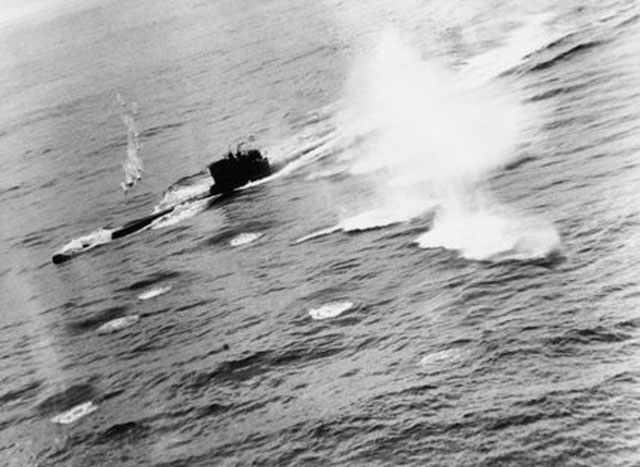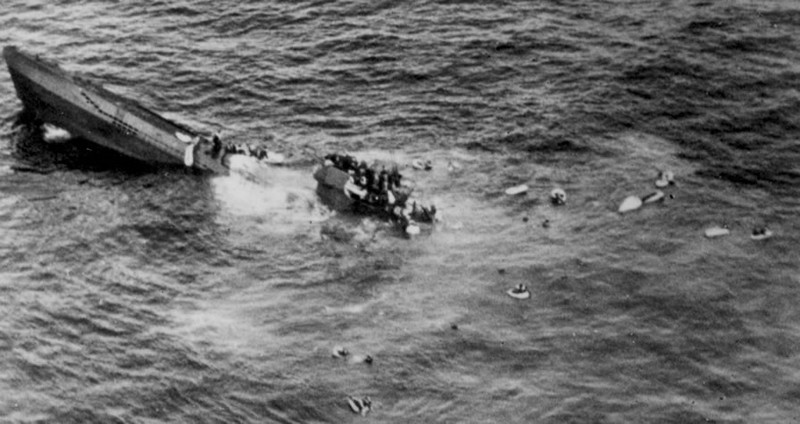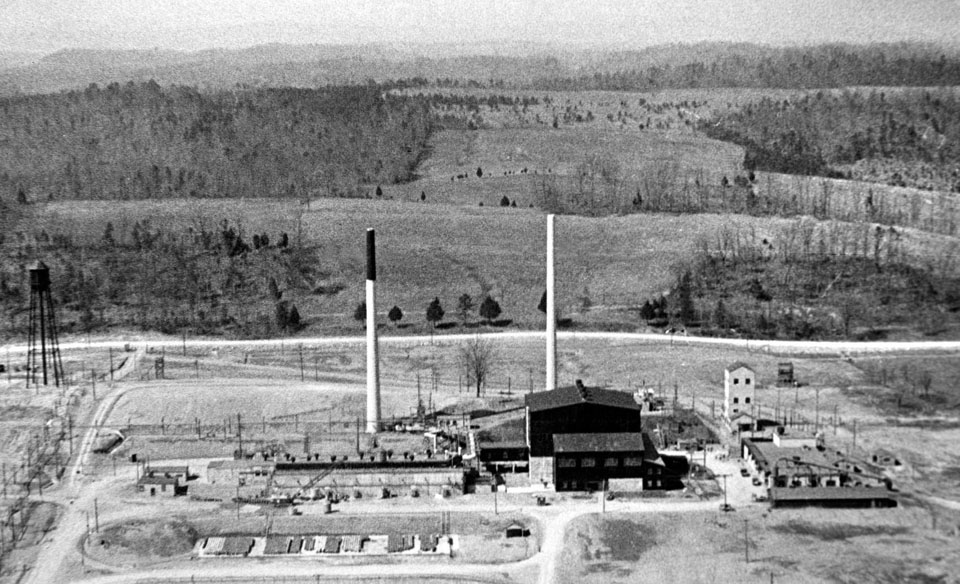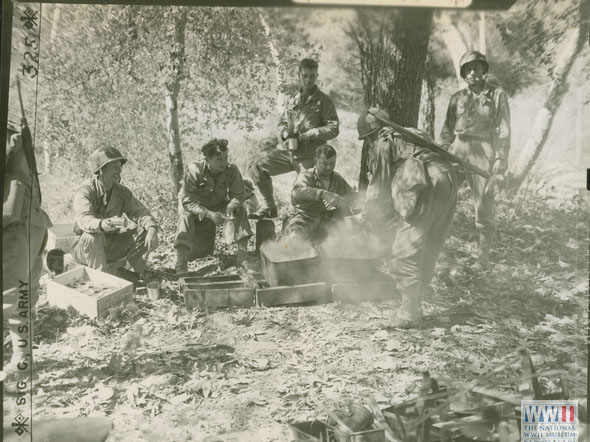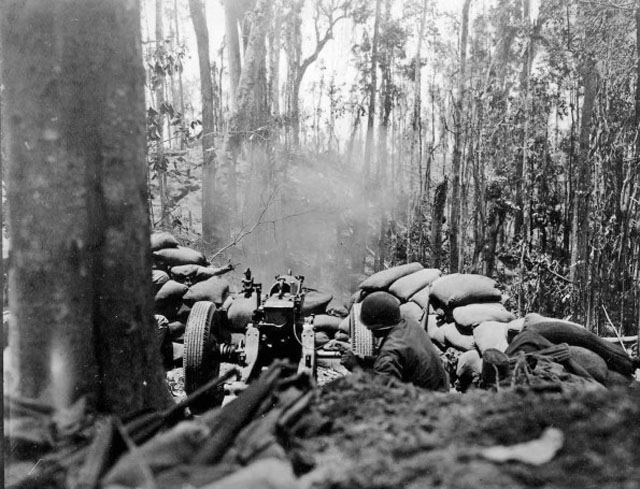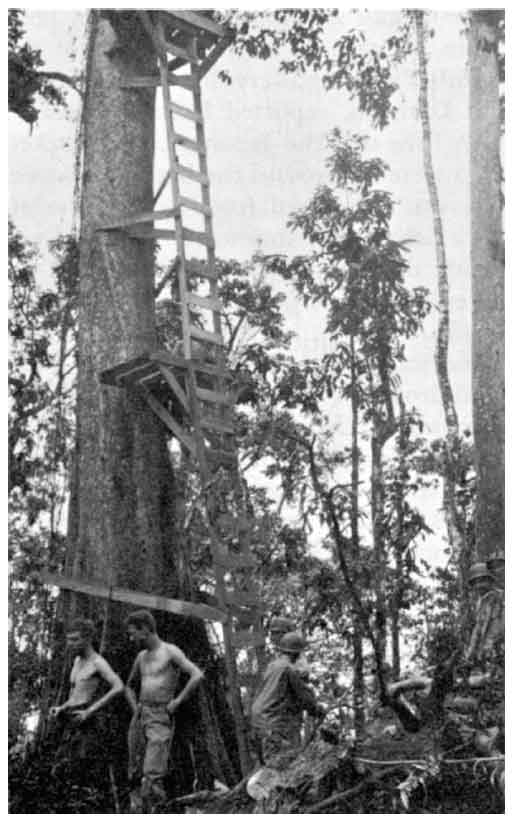Admiralty Islands
New American aircraft arrive at Momote airfield, Los Negros. Other aircraft begin a series of attacks against Manus Island, the biggest island in the archipelago, in preparation for the landing.
[Air Operations, Bismarcks
In their ongoing campaign against Rabaul, AirSols light bombers drop, for the first time, new 500-pound incendiary cluster bombs that each dispense 128 bomblets. The new bomb is especially effective against supply dumps.
[Air Operations, Carolines
In their first mission from the Engebi airfield on Eniwetok, 41st Medium Bomb Group B-25s attack Kusaie Island.
[Air Operations, CBI
BURMA- 490th Medium Bomb Squadron B-25s attack Kamaing and Mogaung in the morning, and 23 7th Heavy Bomb Group B-24s attack both targets again in the afternoon. Also, more than 40 10th Air Force P-38s, P-40s, and P-51s attack Japanese Army ground troops and dumps near Mogaung, artillery batteries at Walawbum, the airfield at Anisakan, rail facilities at Anisakan and Myitnge, and the town area at Laban.
- 6 308th Heavy Bomb Group B-24s attack the port area at Kowloon. 14th Air Force P-40s and P-51s attack the airfield at Foochow, a bridge, factory, and barracks at Sienning, and a barracks at Nanchang.
- While attacking shipping and barges at Anking during a sweep along the Yangtze River, 2 11th Medium Bomb Squadron B-25s, escorted by 8 449th Fighter Squadron P-38s, are attacked by 18 Ki-43 'Oscar' fighters. No confirmed victories are credited from the melee.
- 14 Air Force P-51s and P-40s attack a barracks at Ha Coi and shipping at Campha and Hongay.
Air Operations, Europe
RAF BOMBER COMMANDEvening Ops:
- 102 Lancasters of No. 5 Group carry out moonlight raids on 4 factories in France. 33 planes hit the Michelin works at Clermont-Ferrand, 30 to an aircraft factory at Châteauxroux, 26 to Ossun, and 16 to the La Ricamerie factory. All targets are bombed successfully.
- 1 Lancaster on the Clermont-Ferrand raid is lost.
- 29 Mosquitos are sent to Duisburg and 93 aircraft are involved in Resistance operations without a loss.
ITALY:
- 12th Air Force B-25s attack a marshalling yard at Littoria.
- 12th Air Force B-26s attack Rome's Tiburtina marshalling yard and a rail bridge at Orvieto.
- XII Air Support Command A-36s attack troop positions, tanks, gun emplacements, and railroad targets.
Air Operations, New Guinea
11 V Bomber Command B-25s attack Lorengau and B-25s and RAAF P-40s attack targets of opportunity on Manus.
[Air Operations, Solomons
40 42nd Medium Bomb Group B-25s attack Japanese Army positions in the hills around Empress Augusta Bay, and AirSols light bombers and fighters mount 160 sorties against Japanese artillery and positions around the embattled Bougainville perimeter.
[Allied Planning
The Allied Joint Chiefs of Staff determine the timetable for the Pacific: April 15, invasion of Hollandia, New Guinea; June 15, invasion of the Marianas; September 15, invasion of the Palau Islands; November 15, landing on Mindanao in the Philippines; February 15, 1945, invasion of Formosa.
[Battle of the Atlantic
- Sunderland 'U' of No 422 Squadron RCAF, escorting convoy SC-154, sights U-625. The aircraft attack through flak and drops six depth charges which straddle the target. The U-boat dived only to resurface a short time later obviously heavily damaged with the crew abandoning the ship.
- U-845 is trailing convoy SC-154 when she is spotted on the surface by the Canadian destroyer St Laurent and the frigate Owen Sount. The U-boat dives on being spotted and goes deep. Three depth-charge attacks are launched, followed by a Hedgehog attack and then a seried of creeping attacks by St Laurent and the British destroyer Forester. These produced nothing in the way of a result. Before new attacks could be launched, U-845 surfaces and gunfire is exchanged. The U-boat is heavily damaged and the crew is taking to their dinghies.
|
|
Bougainville
The Japanese make an early morning attack on Hill 260, a strongpoint outside of the Americal Division's main defensive line, occupied by 80 men and divided into two positions, North Knob and South Knob. South Knob is captured in the attack except for six Americans who hold out in a bunker and resist all attempts to finish them off. Gen Oscar W. Griswold, XIV Corps commander, orders the 182nd Infantry Regiment, Americal Division, to hold Hill 260 at all costs. A counterattack fails to drive the Japanese off the hill.
[CBI
BURMAThe Japanese attack the rear of 17th Division's positions at Tongzang. They also bomb the Chowringee landing strip in central Burma. This strip was build by the Chindits and valuable for supplying the columns operating in the enemy's rear. It is becoming clear to the British command that the Japanese offensive is under way.
Gen Stilwell's Northern Combat Area Combat headquarters approves Gen Merrill's plan to gain control of the Moguang Valley by making a flanking movement south the cut the Kamaing Road. The movement will be supported by two regiments of the Chinese 38th Division. The 1st Battalion of the Marauders and a Chinese regiment will move to Shaduzup; the 2nd and 3rd Battaliions will move south of Shaduzup to Inkangahtawng, followed by another Chinese regiment. Meanwhile, the 22nd and 38th Chinese Divisions and elements of the 1st Provisional Tank Group will attack along the main road toward Kamaing.
[Diplomatic Relations
Ireland refuses to oust Axis diplomats as requested by the US.
[Eastern Front
The attacks of Ivan Konev's troops push forward up to 40 miles on a 100-mile front. Uman, southwest of Cherkassy and previously an important Luftwaffe base, is taken by the 2nd Ukraine Front. 1st Ukraine Front continues to advance north of Proskurov.
SOUTHERN SECTORThe 1st Guards Army is involved in heavy fighting around Tarnopol, the Germans counterattacking and forcing the Soviet units out of the town. However, the fortress remains under siege and comes under sustained arty fire. Other units of the 1st Ukrainian Front also puch toward Proskurov as the 1st Panzer Army falls back.
Uman falls to the 2nd Tank Army, while the 5th Guards Tank and 53rd Armies converge on the town to destroy significant elements of the 8th Army. The fighting on the road to Uman has cost the 8th Army some 200 tanks, 600 arty pieces and 12,000 motor vehicles. The 3rd Ukrainian Front crosses the Ingul River as it presses toward the Bug.
[Mediterranean
- U-343 is sunk in a depth charge attack by the British trawler HMS Mull.
- U-450 is sunk in a depth-charge attack by British destroyers Blankney, Exmoor, Blencatha and Brecon and the US destroyer Madison (DD-425).
- The US freighter William B. Woods (7176t) is torpedoed and sunk by U-952 about 47 miles off Palermo, Sicily. 1 of the 28-man Armed Guard and 51 of the 407 Army troops being transported are lost in the attack.
|
|
New Britain
The American forces take Talasea without opposition.
[Pacific
- The US submarine Bowfin (SS-287) in an attack on a Japanese convoy in the Tabalai Strait damages the army cargo ship Tsukikawa Maru (4470t).
- The submarine chaser SC-700 is destroyed and the fuel oil barge YO-44 damaged by fire at Vella Lavella, Solomon Islands.
Solomons
On Bougainville the Japanese gain Hill 260 but lose ground to American counterattacks in other areas.
[Images from March 10, 1944
|
|
|
|
|
|
Island of Bougainville |
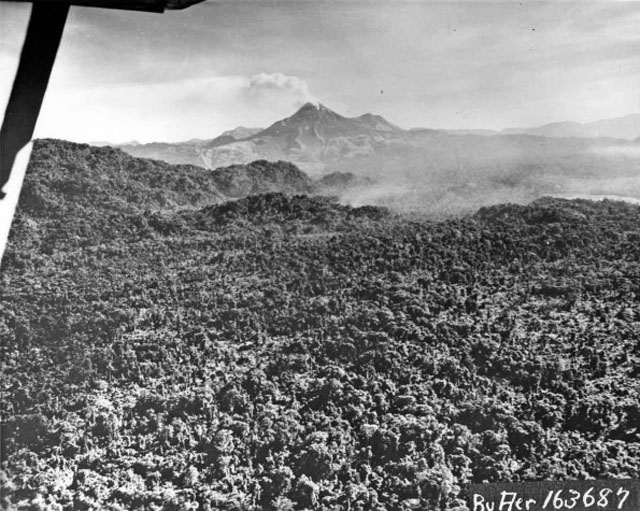 |
